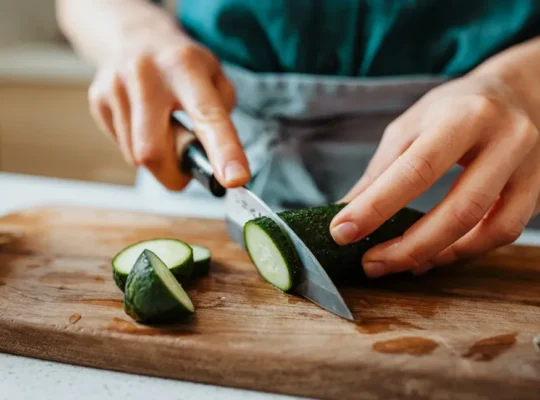Seasonal Gardening: What to Plant Each Month of the Year
A thriving garden doesn’t happen by chance — it’s all about timing. Knowing what to plant each month helps you make the most of every season, ensuring your garden stays productive and beautiful all year long. Whether you’re growing vegetables, herbs, or flowers, planting by month keeps your garden in sync with nature’s rhythm.
Here’s your complete month-by-month guide to seasonal gardening — packed with expert tips on what to sow, grow, and harvest throughout the year.
🌱 January: Plan and Prepare
January is the month for garden planning rather than planting — especially in colder climates.
-
Plan your garden layout: Sketch out where you’ll plant veggies, herbs, and flowers.
-
Order seeds: Stock up on your favorite varieties early.
-
Start indoors: In warmer zones, begin seedlings like tomatoes, peppers, and basil indoors under grow lights.
🧤 Tip: Use this quiet month to clean tools, enrich soil with compost, and repair raised beds or pots.
🌷 February: Start Early Seeds Indoors
As the days slowly lengthen, it’s time to start sowing early crops.
-
Vegetables to start indoors: Broccoli, cabbage, kale, eggplant, and celery.
-
Flowers: Sweet peas, petunias, and snapdragons.
-
Herbs: Parsley and chives can be sown indoors for transplanting later.
🌿 Pro Tip: Use seed trays and keep them near a sunny window or under a grow light for strong seedlings.
🌸 March: Spring into Action
Spring officially begins, and your garden starts to wake up!
-
Direct sow outdoors (in mild climates): Spinach, lettuce, radishes, and carrots.
-
Transplant seedlings: Harden off indoor seedlings before moving them outside.
-
Flowers: Plant pansies, marigolds, and daisies for early color.
🌼 Tip: Prepare your garden beds by loosening soil and adding organic compost for nutrient-rich growth.
🌻 April: Time to Plant in Earnest
April is the heart of spring — the best month for planting in most regions.
-
Vegetables: Beans, peas, beets, potatoes, onions, and kale.
-
Herbs: Mint, oregano, thyme, and dill.
-
Flowers: Zinnias, cosmos, and sunflowers for a summer bloom.
💧 Tip: Mulch your beds to retain moisture and suppress weeds as temperatures rise.
🍅 May: The Growing Season Begins
With frost behind you in most areas, it’s time to plant your warm-weather favorites.
-
Vegetables: Tomatoes, cucumbers, squash, corn, and peppers.
-
Flowers: Plant dahlias, geraniums, and begonias.
-
Herbs: Basil, rosemary, and cilantro thrive now.
🌞 Tip: Regular watering and pest checks are key — warmer days mean faster growth and more bugs!
🌾 June: Maintain and Nurture
By June, your garden is growing rapidly. Focus on maintenance, feeding, and succession planting.
-
Vegetables: Plant a second round of lettuce, beans, and cucumbers.
-
Flowers: Keep deadheading (removing spent blooms) for continuous flowering.
-
Herbs: Harvest frequently to encourage new growth.
🌱 Tip: Add organic fertilizer or compost tea to boost mid-season growth.
🌻 July: Harvest and Replant
Mid-summer brings heat — and harvests!
-
Harvest: Tomatoes, zucchini, beans, and herbs.
-
Plant for fall: Start cool-season crops like broccoli, carrots, kale, and cauliflower.
-
Flowers: Sow late bloomers like asters and chrysanthemums for autumn color.
☀️ Tip: Water deeply in the early morning to help plants handle summer heat.
🍂 August: Prepare for Transition
As summer fades, start thinking about your fall garden.
-
Vegetables: Sow spinach, radishes, and turnips.
-
Flowers: Mums and ornamental kale bring fall charm.
-
Herbs: Continue harvesting and start drying or freezing herbs for winter use.
🌾 Tip: Clear out spent plants to make room for new growth and reduce disease risk.
🌰 September: Fall Planting Season
September is ideal for cool-weather crops and perennials.
-
Vegetables: Lettuce, beets, radishes, and garlic for next spring.
-
Flowers: Plant perennials like lavender and echinacea.
-
Bulbs: Start planting spring bulbs like tulips, daffodils, and crocuses.
🍁 Tip: Use fallen leaves as mulch or add them to your compost pile for nutrient-rich soil.
🍂 October: Clean Up and Protect
Your fall harvest is in, and it’s time to prepare for colder months.
-
Vegetables: Harvest remaining squash, pumpkins, and root crops.
-
Flowers: Cut back spent perennials and plant bulbs if you haven’t yet.
-
Herbs: Bring potted herbs indoors to extend their life.
🧤 Tip: Cover tender plants with frost cloths and insulate garden beds with mulch.
🌿 November: Rest and Reflect
November is about cleanup and soil care.
-
Compost: Add fallen leaves, grass clippings, and organic matter.
-
Cover crops: Sow rye or clover to enrich the soil over winter.
-
Plan ahead: Note what worked (and didn’t) this year for next season’s success.
🌧️ Tip: Drain and store hoses before freezing temperatures arrive.
❄️ December: Indoor Gardening and Rest
Winter’s chill means less outdoor work — but gardening doesn’t stop completely!
-
Indoor gardening: Grow herbs like basil, mint, or parsley on your windowsill.
-
Prepare for spring: Check seed catalogs, clean pots, and sharpen tools.
-
Decorative plants: Bring festive cheer indoors with poinsettias and evergreens.
🎄 Tip: Take time to enjoy the fruits (and flowers) of your labor — and dream up your next garden plan!
🌼 Final Thoughts
Gardening is a year-round journey — one that rewards patience, planning, and persistence. By knowing what to plant each month, you can enjoy continuous harvests, vibrant blooms, and a healthier garden ecosystem.











